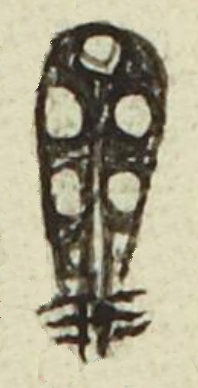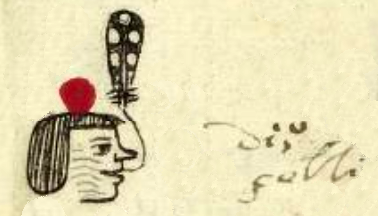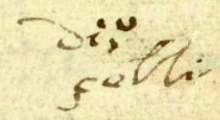Zolin (MH631v)
This painting of the simplex glyph for the personal name Zolin ("Quail") is attested here as a man's name. The glyph consists of one upright feather that is black with five white dots, one at the top and two on each side. Six downy barbs also appear at the bottom of the feather, three on each side.
Stephanie Wood
The quail had a role in the religious life of the Nahuas, largely serving as offerings. Their remains are very prevalent in the finds at the Templo Mayor, and they are prominent in the Mixtecs' Codex Nuttall. For further information see Elena Mazzetto, "Quail in the Religious Life of the Ancient Nahuas", en Milbrath, Susan y Elizabeth Baquedano (coords.), 2023, Birds and Beasts of Ancient Mesoamerica. Animal Symbolism in the Postclassic Period, Denver, University Press of Colorado, pp. 200-219.
Stephanie Wood
dio
çolli
Diego Zolin
Stephanie Wood
1560
Jeff Haskett-Wood
birds, feathers, pájaros, plumas, codornices, viejo, usado, nombres de hombres

zol(in), quail, https://nahuatl.wired-humanities.org/content/zolin
-zolli, something old, used, worn, https://nahuatl.wired-humanities.org/content/zolli
Codorniz o Viejo
Stephanie Wood
Matrícula de Huexotzinco, folio 631r, World Digital Library, https://www.loc.gov/resource/gdcwdl.wdl_15282/?sp=345&st=image.
This manuscript is hosted by the Library of Congress and the World Digital Library; used here with the Creative Commons, “Attribution-NonCommercial-ShareAlike 3.0 License” (CC-BY-NC-SAq 3.0).





